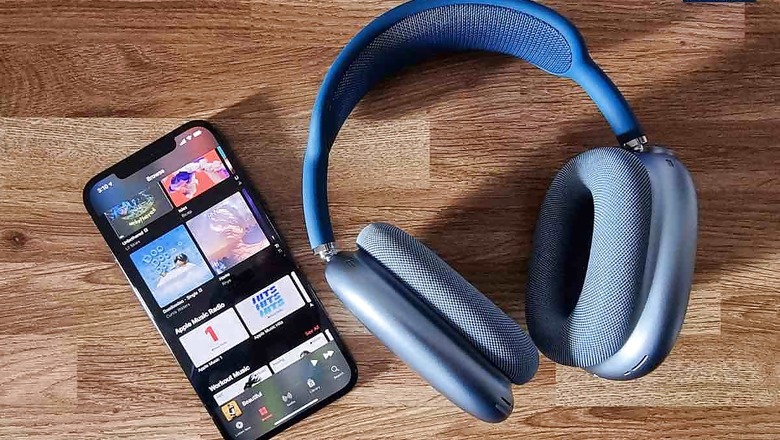
views
Apple Music lossless audio streaming has been announced, and it rolls out for all users of the service starting next month, from June. The feature makes it one of the most prominent music streaming apps to offer both spatial audio powered by Dolby Atmos, and lossless audio streaming over wired and wireless channels. To make things even better, Apple has announced that it will not be charging its existing or new users any extra amount for providing the new features, which are geared at offering over 75 million songs for users to stream in higher quality than before. However, there are a few points in the fine print of the Apple Music lossless and spatial audio features, which clearly define its exact benefits, as well as its trade-offs.
How it works
At the heart of things is the new audio codec, the Apple Lossless Audio Codec (ALAC). The new codec substitutes the AAC codec that Apple Music previously deployed, and it is this that brings about the ability to carry higher amounts of data within the audio container or format that it is played on. Since the songs are stored on Apple servers and streamed remotely, the upgrade will be an implementation from the company’s end, and will depend on the peak quality that artists and production houses publish their music at.
The ALAC is essentially similar to the Sony LDAC or Qualcomm aptX HD audio codecs, which also offer high bandwidth audio bitrate. The audio bitrate is the amount of data that an audio codec can receive or transmit, and therefore defines the peak quality of playback that it can offer. In standard audio streaming such as what Apple Music presently offers, there is a certain level of compression of data in order to reduce file sizes and streamline the process, without compromising on the overall quality.
With ALAC, given there is enough internet bandwidth to stream a track at its maximum quality possible, Apple Music will no longer compress the tracks, therefore giving audiophiles and audio enthusiasts an incredibly high fidelity audio experience. The Apple Music lossless audio streaming will be offered at up to 16-bit/44.1kHz, 24-bit/48kHz and 24-bit/192kHz standards.
Limitations of ALAC right now
As with every new standard, there is a buffer period that is required for it to be adopted. With ALAC, this limitation particularly hurts Apple’s own AirPods lineup more than anyone else. The key difference will come through in wireless streaming via Bluetooth – with the AirPods Pro or even the AirPods Max, the headphones support Bluetooth audio streaming via the AAC codec only. As a result, they are not compatible to support the higher wireless streaming bandwidth that the new ALAC standard requires.
While the AirPods Pro does not have the option for wired audio playback, the AirPods Max does have it. However, its biggest drawback is that it offers wired playback via a Lightning port, and not the classic 3.5mm port. As a result, users looking to get higher fidelity audio playback via wired connectivity will need to use their bundled Lightning to 3.5mm adapters for it. This, as Apple explains, has a major roadblock – the process requires the digital audio signal generated in iPhones via the Apple Music lossless ALAC codec is first converted to analogue, and then re-digitised to digital in the AirPods Max.
The entire process causes some amount of data loss, and as a result, cannot be certified as truly lossless by Apple. It’s still going to sound quite crisp and rich by all means, but just not the truly lossless audio standard that Apple would eventually want its headphones to stream.
Benefits of Apple Music lossless streaming
Of its biggest perks is that Apple Music will not cost users more to stream lossless tracks, which is a boon. More importantly, given how Apple products grow, wireless headphones should soon come with ALAC certification alongside Sony LDAC and Qualcomm aptX HD. Given that the lossless codecs offer similar playback bitrate, premium wireless headphones should already get high resolution, lossless audio playback when connected to iPhones, from June.
In essence, the biggest benefit is your iPhone getting the ability to be a high resolution audio player without spending extra. The downside – none of Apple’s own headphones support it right now, and official third party accessory support will likely remain thin on the ground in the immediate future, too.
Read all the Latest News, Breaking News and Coronavirus News here



















Comments
0 comment